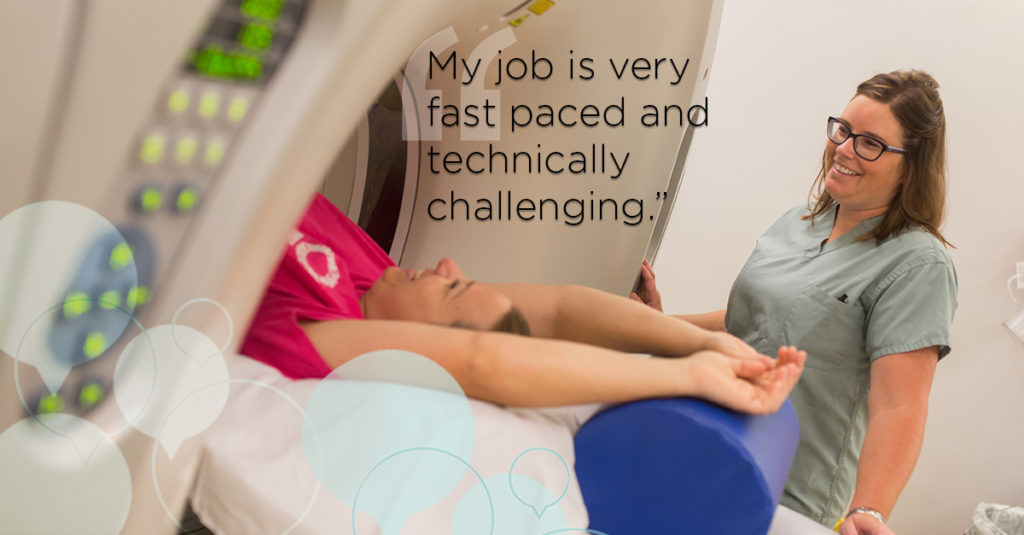
Introducing… a CT technologist
Erin Findlay has been at the Hamilton General Hospital for over 15 years. She started as an x-ray technologist, but has spent the majority of her career as a CT (computed tomography) technologist.
Describe a typical day in your role?
First thing in the morning we make sure that all booked patients’ requisitions have been reviewed and approved by our radiologists. We ensure both CT scanners have been calibrated and are ready to go. If a patient requires IV contrast, we need to obtain a brief health history and verbal consent from them, as well as starting an intravenous line before they are ready for their scan. In addition to our booked patient list, we scan an equal or higher number of ‘add-ons’ from the emergency department, ICU, and other wards in the hospital.
What do you love most about your job/role?
My job is very fast paced and technically challenging. We do a large variety of CT scans on a widely varying patient population so no two days are ever the same. I meet a variety of patients each day and while I only get to spend a few minutes with each, it’s great to be able to chat with them, listening to their stories and jokes.
“We play a vital part in the diagnosis process, especially in time sensitive cases such as stroke and trauma situations.”
What do you find challenging about your role?
We’re helping patients and their families during a difficult time and they’re often nervous about the machine, the scan itself, or the results. This can pose a challenge to ensure the best quality images, especially in a very busy department. Ensuring the comfort of each patient, whether it be physical or emotional, allows us to produce the highest quality images possible, which provide the most information to the radiologists to aid in their diagnosis.
Tell us about your most gratifying experience at HHS
One of the most rewarding aspects of the job is the impact we have on patient care and diagnosis. If during a scan we see a significant pathology or injury, we immediately notify the radiologist and perform additional imaging right away if needed. We play a vital part in the diagnosis process, especially in time sensitive cases such as stroke and trauma situations.
What’s one thing people would be surprised to learn about your role?
Most people are surprised with how much a technologist has to do for each case once the scan itself is complete. We often transform the two dimensional images acquired by the machine during the scan into three dimensional images that can be manipulated to be seen from different angles. We do this for bones to show fractures but most commonly to show a patient’s vascular anatomy (their arteries and veins) to identify any blockages or areas of injury.
